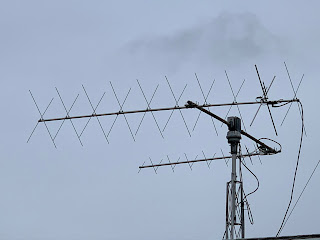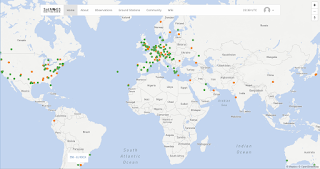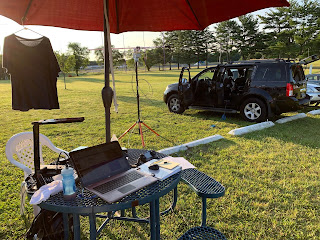W2MMD's First Satellite Contact in Europe!

For those unfamiliar with satellite operation, working DX is quite different from terrestrial radio. Band conditions don't really matter since the stations that can be worked all must be within the footprint of the satellite. The satellite footprint is determined by the altitude of the satellite above the earth. It's like shining a flashlight on a basketball - the further away the satellite is, the larger the circle - but the circle is also dimmer because the same amount of light is spread through a larger area. This is how satellites work - satellites with lower orbits have less range than those with higher orbits. The CAS-4A and -4B satellites (both launched from the same rocket) are in an orbit about 325 miles from earth and have a footprint that would cover most of the US if the satellite was located in the middle of the country. For east coast stations like W2MMD in NJ we can only work west-coast stations on passes over the middle of the country in which the east and wes





